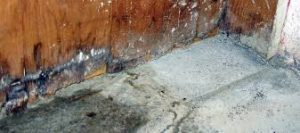Water damage is a worldwide issue and whenever you think of it a scene comes into your mind that shows an area filled with water and items floating on it. The real problem is much more than this and can result in permanent damages that are dangerous for your residential or commercial property and life. Cleaning up and remediation procedure is very tedious and demands instant attention to save the residential or commercial property from comprehensive damage. Water from different sources can damage your property and possessions and the intensity of the issue depends upon the kind of water impacting your residential or commercial property.
If you reside in an area that is more susceptible to such disasters then you require to take additional care as simple methods will never offer preferred outcomes. Water damage due to natural causes is more extreme than the damage by unexpected leakage of pipelines. Natural processes are not under our control and you can’t do anything else besides wait. Ones the difficulty is gone, your work starts from there and you need to do the cleansing and remediation. If it is drizzling difficult then you need to follow the instruction given by the meteorologists and follow the adequate preventive measures and after the rain stops you can start cleaning procedure to remove the water.
Tsunami and cyclone impacted areas require special care and you should seek advice from the engineer and another worried individual for the safety of your property and valuables. Always focus on the news if the water damage repair work and cleaning methods are being taught to you as these natural catastrophes are not in your hand and you need to be prepared to combat with them. After the disaster, you can continue with the cleansing and remediation process that is more severe than the repair process in case of small water damage. In such areas, the government conducts several restoration programs and you can benefit from that.
If your location is affected by drain water then you require to eliminate it as quickly as possible since it will not just affect your property, however, it will also affect your health. Drain water is highly contaminated and rich in hazardous germs and microbes. You can’t manage the cleaning and repair process without the use of security equipment to save you from infection and it will be better to take assistance from water damage repair specialists.
Water damage due to pipe burst in cooking area or restroom can be handled by yourself as it is not contaminated and you may likewise repair the damage and clean your location on your own. If you are unable to handle it due to the severity of the issue or internal damage that is out of your understanding then you can call the provider for cleansing and restoration.


